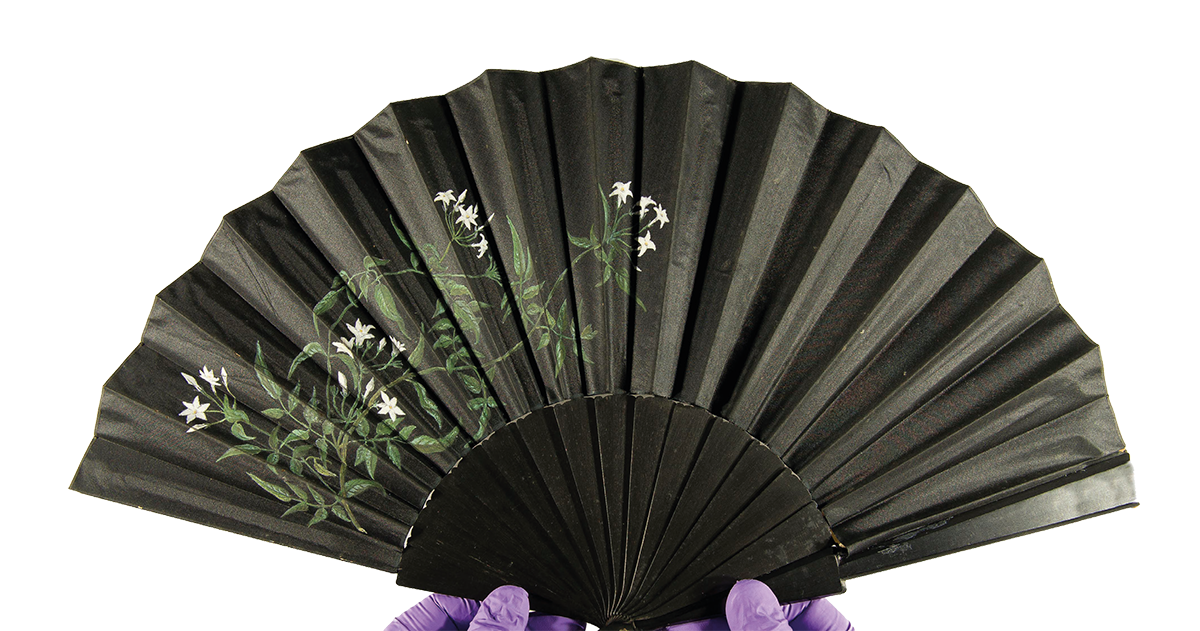A fascinating history of funerals

Everyone from archaeologists and sociologists to artists and animators are beating a path to T Cribb & Sons’ Beckton branch in East London – not to arrange a funeral, but to view the extensive collection of items the firm has in its National Funeral Museum.
The museum was created by John Harris, senior partner in family business T Cribb & Sons and a founder member and past president of SAIF, from his passion for all things ‘funeral’.
John has an MA in Death and Society, and his collection, which he began in the 1980s, has grown so large that it not only takes up two rooms at the branch but he has also brought in curator Minette Butler to research and organise the extensive collection.
The museum’s collection helps to show how society’s attitude to death has changed over the years and has attracted a great deal of interest from academics, people in the creative arts and the general public.
Highlights range from a mourning garter from Charles II’s funeral (1685) to right up to a simple paper wristband, familiar to anyone who queued to see HM Queen Elizabeth II lie in state at Westminster Hall in September.
From cherished trinkets memorialising lost loved ones, all the way to commemorative mementos for the great funeral pageants of state, the collection represents the length and breadth of British funeral history.

Minette, who has an MA in Heritage Management and started curating the collection in 2021, finds the items fascinating. She said: “The Victorian jet jewellery, made from a type of fossilised wood from Whitby, is very beautiful and some of the lockets hold hair from loved ones who have died, which makes them very personal.”
The museum also contains examples of ‘hatchments’, which were diamond-shaped panels made from painted wood or silk. They date back to the ‘Heraldic’ funerals held for the mediaeval elite, like knights, archbishops and royalty, and were displayed on the front of the deceased’s house and carried in the funeral procession. Early undertakers imitated this pomp and ceremony by painting their own special crests and hiring them to families without heraldry of their own. Signs like these could be found in funeral directors’ windows up to the 1940s.

The Cribb family trade is also a proud collector of funeral vehicles, many of which are still in use by the company today, ranging from hand-drawn biers to horse-drawn and vintage motor hearses. The firm is even restoring one of only two Shillibeers left in the UK – a unique combination of a horse-drawn hearse and mourning carriage.
Minette said: “When you look at the range of objects we have here, you see a culture that didn’t just acknowledge death; it eagerly shared and consumed it.
“Nowadays, many people don’t even wear black at their funerals; instead of focusing on death and their grief, they find comfort in celebrating life.
“You can learn a lot about a culture from how it buries its dead, and the range of interest we’ve already had in the museum shows that the subject has almost endless potential. We’re passionate about sharing the collection to researchers and to raising awareness on this subject to the wider public.”
The museum is open from Monday to Friday at T Cribb & Sons’ Beckton branch at Victoria House, 10 Woolwich Manor Way, London, E6 5PA. Please email to make an appointment and Minette would be more than happy to take any curious visitor or expert researcher around. Look out for Minette’s regular social media posts about the National Funeral Museum on Twitter, Instagram and TikTok.
Tags: National Funeral Museum